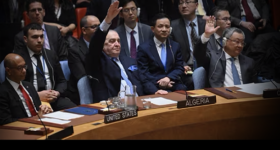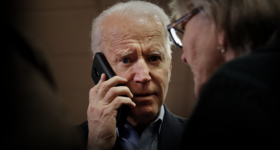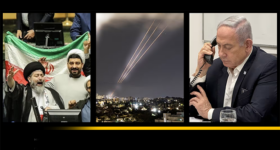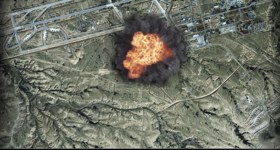21st Century Wire says…
Whether it’s a Bush, a Clinton, or an Obama – the same wars will continue, with the only difference being how these conflicts are spun by media and politicians in order to manipulate public opinion, and thus, manufacture a sufficient level of public consent to keep the show on the road.
At this point, it’s hard to count the cost, not only in terms of human life, but also in lost political capital and good will – deficit that will extend for many generations.

(Image Source: Siasat)
Bill Van Auken
Global Research
Less than two months after President Barack Obama announced an end to US combat operations in Afghanistan, top Pentagon officials have made it clear that these murderous operations are not only continuing, they are escalating, while plans for the withdrawal of American troops are being reconsidered.
At the end of last year, the American president declared that “the longest war in American history is coming to a responsible conclusion.” He added that the drawdown of US forces marked “a milestone for our country.”
But the war in Afghanistan rages on, with mounting evidence that more than 13 years of US military occupation—dubbed “Operation Enduring Freedom”—have produced only a debacle for US foreign policy and a humanitarian catastrophe for the impoverished Afghan population.
The longest war in US history has claimed the lives of 2,356 American troops and left another 20,066 wounded, the vast majority of these casualties having taken place during the administration of Barack Obama. The current president promoted the intervention in Afghanistan as the “good war” and more than tripled the number of US soldiers and Marines fighting it. The cost to the US economy is estimated at somewhere between $750 billion and several trillion dollars.
In his speech last December, Obama claimed that 13 years of US war and occupation had succeeded in “devastating the core Al Qaeda leadership, delivering justice to Osama bin Laden, disrupting terrorist plots and saving countless American lives.” They had as well “helped the Afghan people reclaim their communities” and “take the lead for their own security.”
This glowing assessment was given a different spin last week when newly installed Defense Secretary Ashton Carter said that Washington wanted to make sure that “the Afghans themselves are able to preserve the environment which our forces have created over the last few years—one of relative security and stability.” As a result, he said, Washington was “rethinking” its “counterterrorism” operations, as well as its stated troop withdrawal timetable.
Carter’s talk of “relative security and stability” is hogwash. All indications are that the US puppet regime in Kabul is confronting a catastrophe, and that its patrons in Washington are convinced that only an escalation of the slaughter can reverse ever more threatening trends and prevent a Vietnam-style rout.
There are presently some 10,000 US troops in Afghanistan, along with an estimated 20,000 military contractors and several hundred CIA operatives. While Obama claims to have ended US combat operations in the country, his administration has ordered a sharp increase in night assassination raids by American special forces troops against Afghan villages, as well as stepped-up aerial bombardments of suspected insurgent targets.
Both tactics aroused intense popular hostility and were formally proscribed by former President Hamid Karzai. They have received support, however, from his successor, Ashraf Ghani, who is increasingly desperate in the face of a rising offensive by anti-regime forces.
The military escalation has exacted a brutal toll upon the Afghan civilian population. The United Nations agency for Afghanistan documented 10,548 civilian casualties last year (3,699 deaths and 6,849 injuries). This represents a 25 percent increase in the number of fatalities over the previous year and the highest number of civilian deaths and injuries since the UN began systematically recording casualties in 2009.
There are mounting signs that the US-armed and trained Afghan security forces are in a state of disintegration. The special inspector general for Afghan reconstruction (SIGAR) last month quoted Lt. Gen. Joseph Anderson, the then-commander of the US-led occupation forces, as stating that the level of casualties suffered by the Afghan forces (more than 5,000 Afghan soldiers and police were killed in 2014 alone) was “not sustainable,” nor, for that matter, was their desertion rate.
The clearest indication of the dire condition of the Afghan National Army and police was the recent decision by the Pentagon and NATO to classify all information on their combat capabilities as secret, after years of publicly releasing such data.
The economic and social situation confronting the country is, if anything, even more desperate. Afghanistan ranks 215th in the world in terms of per capita income, with close to half of the population living in dire poverty. The economy has begun to contract along with the decline in the US military presence and the level of foreign aid, the main sources of revenue.
Figures given out by US agencies boasting of dramatic strides in life expectancy, education and other indices have all been called into question by international agencies, with the numbers from Washington representing little more than war propaganda.
As opposed to the fraudulent claims of progress made by the White House and the Pentagon, polls have shown that a broad majority of the American public believes the Afghanistan war was not worth waging, while just 23 percent of the US soldiers who fought there believe their campaign was successful.
The turn by the Obama administration to an escalation of military operations in Afghanistan is driven by the same predatory geostrategic interests that led to the US invasion and occupation in the first place. These were based not on concerns about terrorism, but rather the desire to assert US hegemony over the energy-rich regions of the Caspian Basin and Central Asia and position the US military closer to the borders of both Russia and China.
Within the US ruling establishment, there are growing fears that a precipitous US withdrawal will create a vacuum that will be filled by Beijing and Moscow.
The “rethinking” of US combat operations in Afghanistan is taking place amid escalating US military interventions on a world scale. Washington has announced plans for a major US-led offensive against Mosul, an Iraqi city of 1.5 million, as it continues aerial bombardments in both Iraq and Syria. Almost simultaneously, it joined Turkey in announcing plans to train thousands of Syrian “rebels” to be unleashed nominally against the Islamic State of Iraq and Syria (ISIS), but also in a war for regime change in Syria.
In Ukraine, Washington is escalating its provocations against Moscow. The new US defense secretary has signaled his support for arming the Ukrainian regime in a war that could bring the US into direct confrontation with a nuclear-armed Russia.
At the same time, the US Navy has unveiled plans to deploy four littoral combat ships—designed for combat in coastal areas—in northeast Asia as part of the “pivot to Asia,” which includes plans to shift 60 percent of US naval assets to the region in order to confront the rise of China.
As Leon Trotsky wrote in the run-up to the Second World War, while Nazi Germany was driven to “organize” Europe, US imperialism “must ‘organize’ the world.”
“History,” he warned, “is bringing humanity face to face with the volcanic eruption of American imperialism.”…
Continue this story at Global Research
READ MORE NATO NEWS AT: 21st Century Wire NATO Files
–















